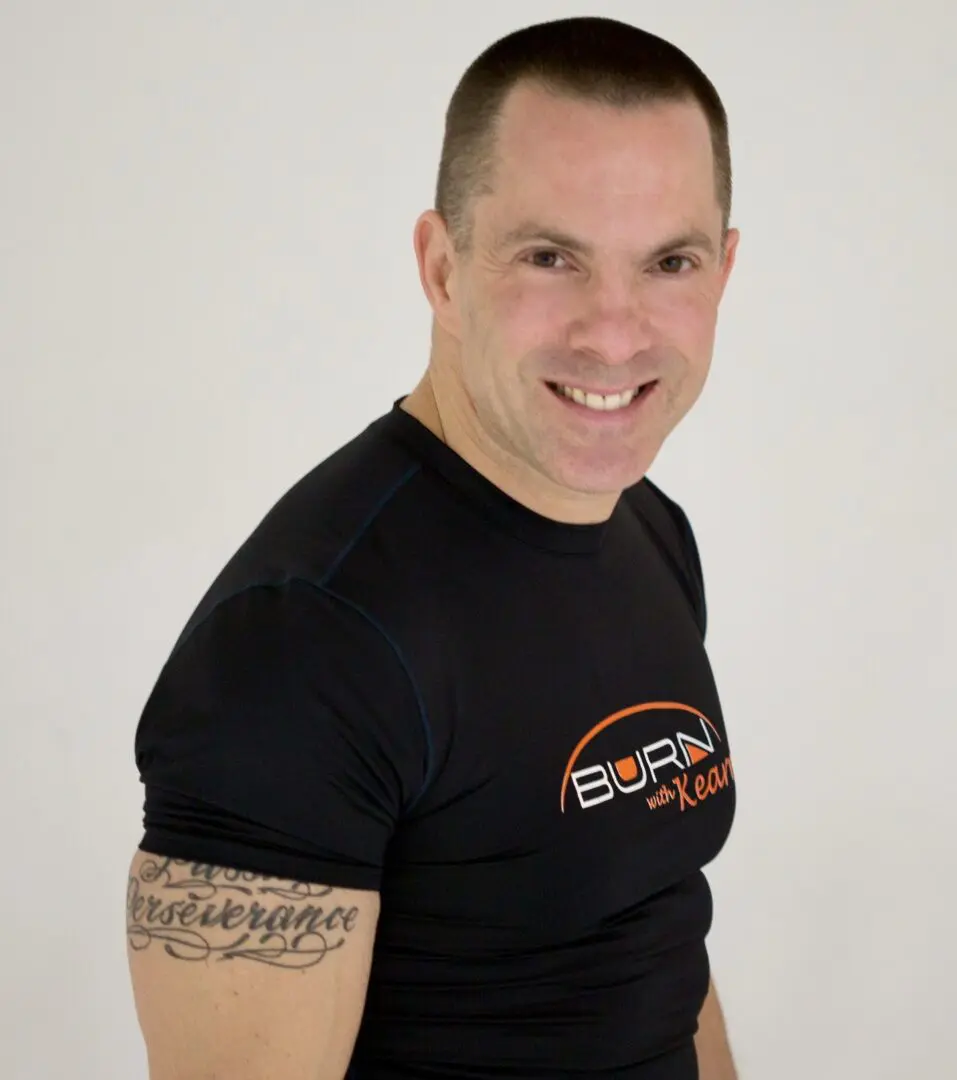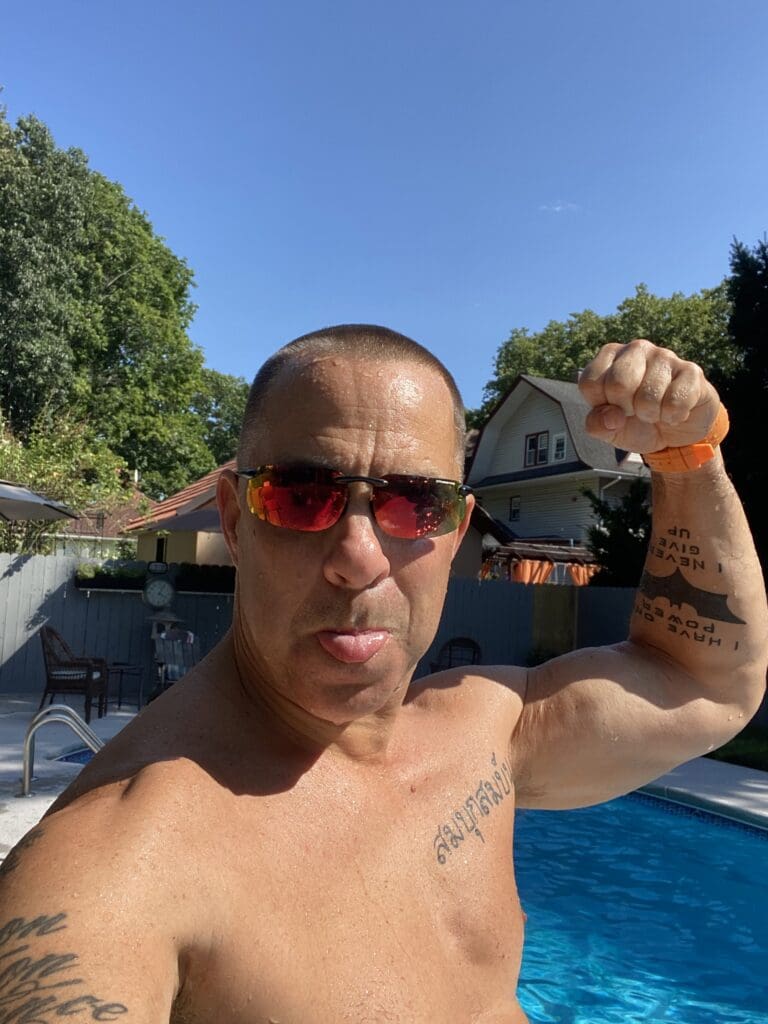Search Posts
Recent Posts
- Rhode Island Weather for October 24, 2024 – Jack Donnelly October 24, 2024
- Vineyard Wind to take down more blades following inspections after July failure – Nantucket Current October 24, 2024
- To Do in RI: Rhode Island Italian American Hall of Fame adds Admiral, MD & author, sports icon October 24, 2024
- Johnson & Wales now offering nation’s first 3-year in-person Bachelor’s degree October 24, 2024
- RI Veterans: Did you know? 24.10.24 (Arlington info, upcoming events, resources ) – John A. Cianci October 24, 2024
Categories
Subscribe!
Thanks for subscribing! Please check your email for further instructions.

Burn with Kearns: How and why you should be engaging in active recovery – Kevin Kearns
By Kevin Kearns, contributing writer
Many years ago, it feels like forever at age 53, we just worked out on a formula of 3 days on, 1 day off, or 2 on – 1 off. No one really discussed active recovery. Years ago, I read an article on the great bodybuilder Arnold Schwarzenegger who never really did any cardio before a competition. He would go hang out with the locals the week of, or before, and go dancing with them. It would help him drop some more weight before the show.
In the world of MMA fitness, the great Randy Couture said he would not take more than 4 days off in a row from training. When asked why he replied, “it hurts too much to come back.” I know for myself at 52 this year, what is moderation at 42 is different than at 52. What’s moderation at 42 is different than at 32, and so on.
Fast forward to today and the term active recovery is now on everyone’s mind. I have noticed that if I’m really sore after performing a hard workout, the next day I’m better off doing something lighter or different. The question you might ask is why is that so?
Everyone has stress in the body. There is distress and eustress. Distress is unhealthy and can cause many diseases. These diseases can include cardiovascular, to some forms of cancer, to the common cold. Eustress is positive for the body. This mostly caused by exercise. However, exercise stress does come with a double edged sword. There are many by-products of exercise that are not healthy for the body or don’t really feel good. One of which is lactic acid. Lactic acid is a by-product of intense exercise. With aerobic type exercise the lactic acid can be converted into pyruvic acid and used as energy. Unfortunately, with strength training or HITT type of training it is not. What you have the next day are sore muscles and possibly stiffness. As well, some toxins can be trapped in the muscles as well. Free radicals and blood impurities are all basically stuck in the muscles and cells. You might have had a great workout the day before, but now you feel like a bus hit you.
This is very common and often can be discouraging when starting an exercise program or getting older (as I like to call it, leveling up ) as we continue to exercise. When I switch my workouts up, I will be sore for a number of days after the new program. It takes my body a few weeks to get adjusted to the program. And I might as well forget about it if I take a week off. That’s like hell coming back.
So, what is a 40 plus guy to do? The answer is simple. Exercise the next day. I know that must seem so totally the opposite of how you feel the next day, but it truly works. The key is not to train at the same intensity as the previous day. One of my mentors use to call it an “unloading day”. The concept is sound and works well. The challenge for most people is they will think it’s not enough of a workout or they are too sore. We will explore some “active recovery” modalities and the benefits of them.
Swimming
Most people overlook the power of water. Swimming and aqua therapy have been used for centuries to improve
- flexibility
- overall wellness
- fatigue
- stimulate hormone balance
- works your entire body
- feels good because we came from water
- low impact
- zero cost
- brings you back to nature
- freedom of movement
- turns back the clock with your blood chemistry
- anyone can do it
- You’ll use muscles you did not know you had.
Yoga
I have been doing yoga for 10 years now. My one regret is that I did not start it in my 20’s. So, what it’s good for
- Flexibility
- Stress relief
- Increase joint mobility
- isometric strength
- Stimulates multiple hormones and organs
- It’s a workout from the inside out
- burns a lot of calories
- anyone can do it
- low cost
- can actually change your metabolism
- reduces arthritis
- low impact
- Its over 25,000 year old
- feels good on the whole body
- It has a “ rinsing effect “ on your organs
Hiking
- Get back to nature
- great cardio
- change of scenery
- low impact
- anyone can do it
Hiking outdoors has plenty of perks: nice views, fresh air, and the sounds and smells of nature.
It’s good for you, too. Hiking is a powerful cardio workout that can:
• Lower your risk of heart disease
• Improve your blood pressure and blood sugar levels
• Boost bone density, since walking is a weight-bearing exercise
• Build strength in your glutes, quadriceps, hamstrings, and the muscles in your hips, lower legs
• Strengthen your core
• Improve balance
• Help control your weight
• Boost your mood. “Research shows that hiking has a positive impact on combating the symptoms of stress and anxiety,” says Gregory A. Miller, PhD, president of the American Hiking Society. “Being in nature is ingrained in our DNA, and we sometimes forget that.” (Web MD)
Foam rolling and active release stretching
Before people discovered foam rolling and active release stretching, we all went to a massage therapist. Now with the advent of foam rolling and all the other little toys people can now alleviate muscle soreness and get rid of toxins trapped in their muscles, what would have cost you 100’s of dollars at the massage therapist is now available at home and anytime.
What Is Myofascial Release?
You might wonder what myofascial release means. Fascia is sort of like plastic wrap that covers pretty much every part of your body, comprised of collagen fibers that surrounds and penetrates your muscles, organs, and nerves. (1) Fascia essentially holds us together.
Of course, sometimes holding everything together can take its toll on your body. It’s no different for our fascia. Through overtraining, it can become sore and restricted. Because of little tears that sometimes don’t heal properly, adhesions develop. If the connective tissue surrounding your muscle becomes restricted, you’ll notice your muscles will also become restricted in their movement.
Myofascial release describes what happens when you apply pressure to the affected areas to eliminate adhesions and release tension, ultimately improving movement and restoring the body back to its natural state. Foam rolling, myofascial release encompasses a wide range of modalities including Rolfing, massage and the Graston technique.
While there are many reasons to incorporate foam rolling into your fitness routine, let’s briefly look at 5.
1. Improved flexibility and increased joint range of motion
For years, stretching was the standard method to decrease muscle tightness and improve flexibility prior to either working out or performing a sport. Newer research, however, shows foam roller exercises before an activity can led to an increase in flexibility.
2. Better circulation
Because blood carries oxygen throughout the body, good circulation becomes crucial to overall health. Among other reasons, a decrease in our circulation can lead to a whole host of problems like numbness in our limbs, impaired cognitive ability (the ability to think clearly!) and weak immune system. Myofascial release can help improve circulation by breaking up the tight areas where blood flow may become restricted.
3. Stress reduction
Foam roller exercises can help reduce stress post-workout. One study found myofascial release can lower cortisol, your stress hormone that you want to seriously dial down after a strenuous workout.
4. Reduce exercise-related soreness
Whether you are an experienced athlete or a weekend warrior, you’ve probably experienced delayed onset muscle soreness (DOMS). (4) Simply put, DOMS is the pain and stiffness in your muscles that can typically set in anywhere from 24–48 hours after an intense workout.
However, research finds foam rolling can substantially reduce the chances of that soreness creeping in so that you don’t spend the day after your first cycling class stuck on the couch wondering why your legs hate you so much.
5. Prevent injury
Treating an injury becomes much easier when you avoid it in the first place. Oftentimes a consistent routine of proper stretching techniques combined with foam roller exercises can prevent many injuries associated with tightness and overuse, such as iliotibial band syndrome and other common running injuries.
The iliotibial band runs from the top of the leg by your hip to just below your knee. It tends to be particularly susceptible to injury, especially in runners. One caveat: If not done properly, you can do more harm than good. (6) Rolling on an already inflamed area can actually increase inflammation, thereby giving you the exact opposite effect, you are trying to achieve.
Pilates dance and tai chi
Long time exercise modalities like the above have been somewhat frowned on for years. I personally know pilates is quite tough, I perform Chi Quiong on a regular basis, and I have been known to rip up a dance floor at least 1 to 2 x a month.
Even the great Arnold Schwarzenegger would go out and dance with the locals during a competition week. He said wit would help he cut weight. The point being is this it’s not necessary to kill it every day . As they say in yoga there is a time for being rigorous and a time for rest.
See you at the top! – Coach Kevin Kearns
___
Coach Kevin Kearns, BS FMS CPT
BurnWithKearns.com – Direct: 508 404 8503

Both of Coach Kearns’ books may be purchased on www.Amazon.com. For more information about Coach Kevin Kearns, including scheduling speaking engagements and classes (both online and in person), please contact him at 508-404-8503 or [email protected].
Author of “There’s Light In The Tunnel” How to Survive and Thrive with Depression – “Always Picked Last“ A guide to navigating bullies on Amazon and Audible
youtube.com/user/burnwithkearns
https://www.linkedin.com/mwlite/in/burnwithkearns
Coach Kevin Kearns has been coaching in the world of fitness, nutrition, and tactical self defense for over 3 decades. As the former conditioning coach to 15 UFC Pro Fighters, and ranked in the Top 5 in the UFC , he is no stranger to the the importance of proper nutrition and proper mindset programming. He has long advocated to all his clients – athletes or the general population – about the importance of programming mind, body and spirit.
Coach Kevin Kearns BS FMS CPT – Former conditioning coach to 15 UFC Pros Ranked in Top 5 by the UFC Personal Fitness Coach, Author, Columnist, Motivational Speaker, Corporate Wellness Consultant, Youth Wellness Program Provider, Certification Specialist, Personal Self Defense, and Law Enforcement Defensive Tactics Specialist Www.BurnWithKearns.com.
